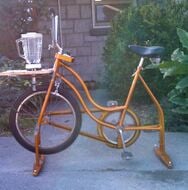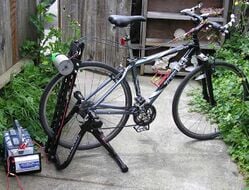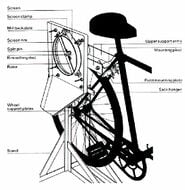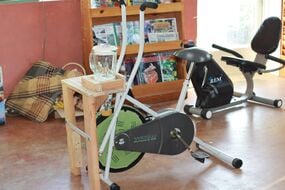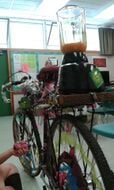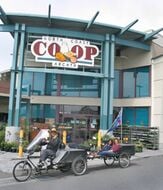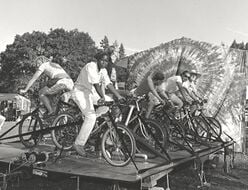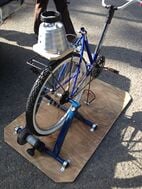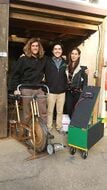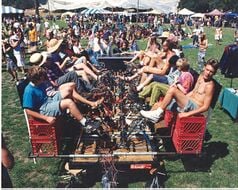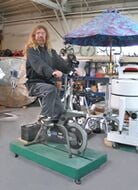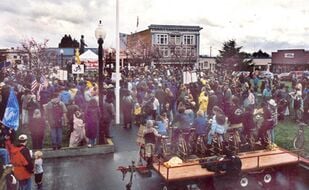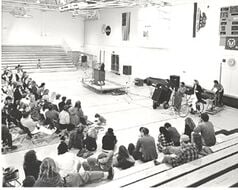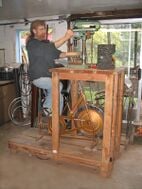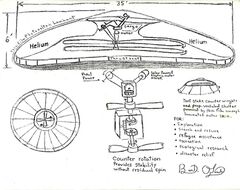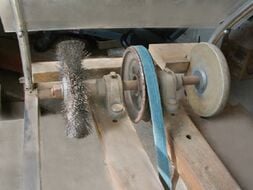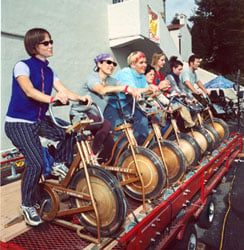
Pedal power is the use of human power by pedalling to power a device. This can be done directly through a mechanical connection or by generating electricity that will be used to power it.
Electrical vs mechanical connections[edit | edit source]
Electrical devices often have limited input current tolerance. Consequently electrical elements (such as diodes and inverters - available to purchase at a local electronic store or online) are necessary to convert the current created into a current that the device can use. If these elements are left out there is a good chance that you will damage your device.
The other consequence is that this configuration loses more energy in translation than a mechanical device, especially if a battery is needed between the generator that creates your energy and your device. In other words, these systems are less efficient as pedal-power devices than mechanical devices.
-
Electrical pedal powered device example: CCAT pedal electric blender
-
Mechanical pedal-powered device example: CCAT pedal washing machine by Bart Orlando. Diagram by Matt Rhodes. The bike drives a shaft mounted pulley that drives the transmission, replacing the motor that traditionally drives the agitator
Electrical[edit | edit source]
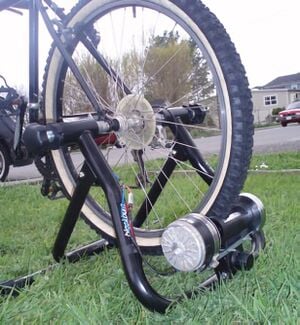
A pedal powered generator is a Human Powered Energy Generator (HPEG) that provides a method of generating electricity by means of a modified exercise bike for use in energy storage and running household appliances. Human/mechanical energy is converted into electrical current by means of a Direct Current (DC) generator that is connected by a fanbelt to an exercise bike flywheel.
The energy created by the DC generator can be stored in various types of lead-acid batteries. Energy stored in battery form can act as a supplemental energy source for battery banks that may already be used for wind, hydro and photovoltaic systems. Also, energy that is stored within the lead-acid battery can be utilized as DC current for use in DC appliances such as those found in automotive mobile homes. If Alternating Current (AC) appliances are in place then an inverter must be used to transfer the 12 volts of DC current into the standard 110 volts of AC current for usage by these appliances.
For a complete guide on how to build a pedal powered generator visit Bicycle generator: The ultimate how to guide (With examples!)
Mechanical[edit | edit source]
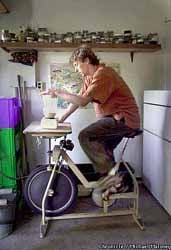
Instead of generating electricity (like with pedal powered generators), devices can be powered directly through a mechanical connection.
Mechanical devices typically have to be modified, possibly to the point that it may be impossible to return it to its original condition. These devices include blenders, drills, washing machines, etc. All of the energy put into pedaling is translated directly into the action the device's motor would have performed.


